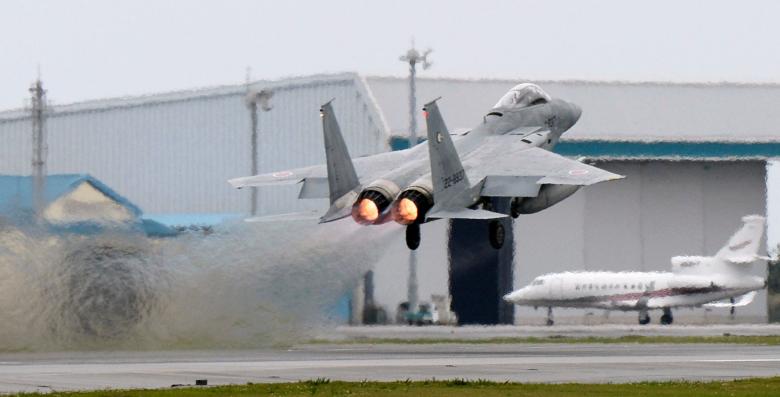The Japanese air force has sent fighter jets after foreign aircraft at a record pace in the past year to March 31 revealed government figures amid growing tensions with Beijing over disputed islands in the Easy China Sea and western Pacific.
Japan worries that China’s probing of its air defenses is part of a push to extend its military influence in the East China Sea and western Pacific, where Japan controls an island chain stretching 1,400 km (870 miles) south towards Taiwan.
“Recently we have seen Chinese military aircraft operating further south and that is bringing them closer to the main Okinawa island and other parts of the island chain,” Japan’s top military commander, Admiral Katsutoshi Kawano, told a briefing in Tokyo.
Okinawa is home to the biggest concentration of US Marine Corp forces outside the United States, hosting the bulk of the roughly 50,000 US military personnel stationed in Japan.
Japan’s Air Self Defense Force reported its fighters scrambled 1,168 times over the 12 months, up from 873 last year. A record 851 jets headed off approaching Chinese planes, or 280 more instances than in the corresponding period last year.
The new figure was also well above the previous high of 944 incidents in 1984, when Russian, rather than Chinese, aircraft triggered most of the scrambles.
The uptick in Chinese activity has contributed to rising tension in East Asia since the start of the year as North Korea pushes ahead with ballistic missile and nuclear bomb tests that have stoked fears in Japan, the United States and elsewhere.
Japan’s navy plans joint drills around the East China Sea with the US Navy’s Carl Vinson carrier strike group, as it steams towards the Korean peninsula, two sources told Reuters.
Encounters with Russian aircraft, which are often bombers flying from the north that skirt around Japan’s airspace, rose 4.5 percent, to 301 scrambles.
Meanwhile, Philippines’ President Rodrigo Duterte cancelled a planned visit to an island the Philippines claims in the disputed South China Sea, after Beijing warned him “of trouble” if he went ahead with the trip.
The brash Philippine leader last week announced his plan to raise the Philippine flag in the island of Thitu and fortify it with barracks, setting off alarm bells.
“Because of our friendship with China and because we value your friendship I will not go there to raise the Philippine flag,” Duterte said in a speech before the Filipino community in Riyadh late Wednesday.
China claims most of the South China Sea through which about $5 trillion in ship-borne trade passes annually. Brunei, Malaysia, the Philippines, Taiwan and Vietnam also have claims.
Duterte, who led the warming of ties with China, had blamed the United States for the current maritime tensions for not intervening to stop China building and arming artificial islands in the Philippines’ exclusive economic zone.
The Philippines will reinforce, but not militarize, areas in the South China Sea controlled by Manila to maintain the geopolitical balance, Duterte said on Monday.
